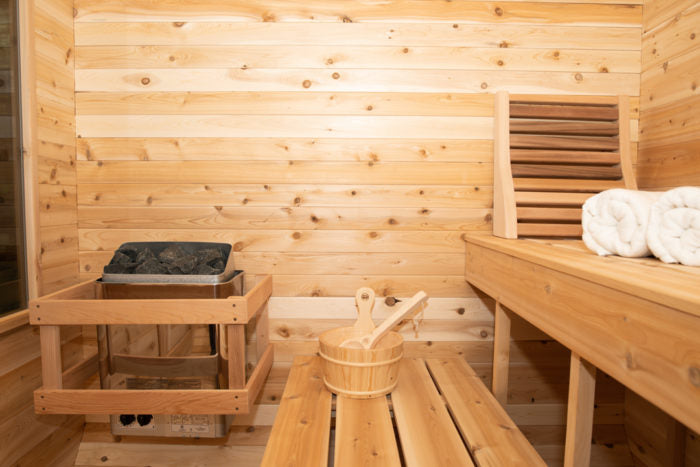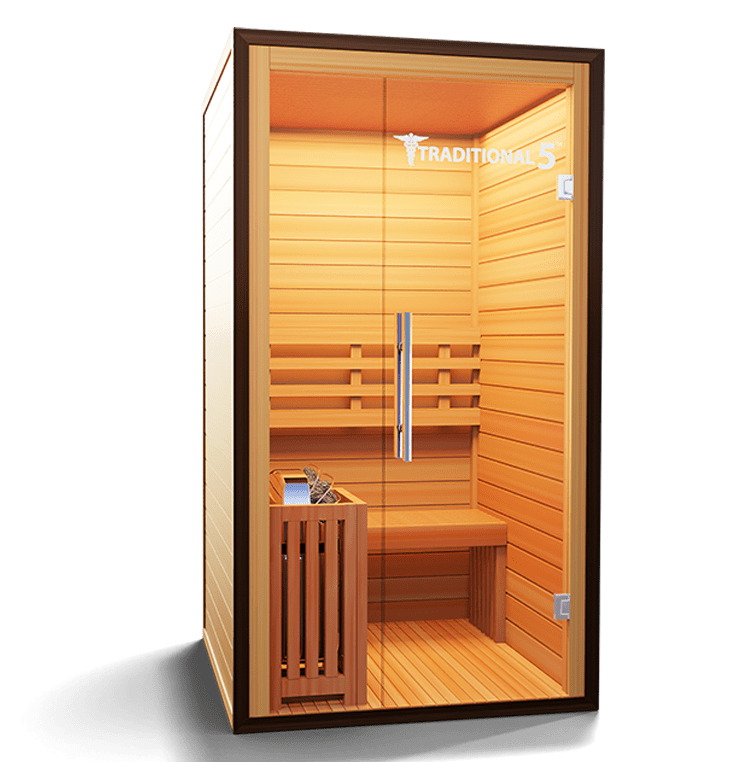Traditional Sauna Fundamentals Explained
Traditional Sauna Fundamentals Explained
Blog Article
See This Report about Traditional Sauna
Table of ContentsAll About Traditional SaunaWhat Does Traditional Sauna Mean?Rumored Buzz on Traditional SaunaThe Buzz on Traditional SaunaWhat Does Traditional Sauna Mean?
A lot of the weight shed in a sauna is water loss and is re-gained upon rehydrating. Nevertheless, undeniably sauna can be an essential part of a healthy and balanced fat burning program. To take a look at the differences between typical and IR saunas, I will divide these into proven, academic, and made distinctions.Therefore, the best point in the saunawhich is at the ceiling straight over the sauna heateris normally in between 185 and 190 F. Claims that a typical sauna exceeds 200 F is just not real and not applicable for electric saunas sold in the US. The temperature for a far-infrared sauna is usually set in between 120 and 140 F; nonetheless, unlike the typical sauna, the objective in and IR space is not to achieve a high temperature level.

When a conventional sauna has been effectively heated, the sauna walls are warm, the air temperature has actually accomplished established temperature and the rocks are incredibly heated. As an intriguing side note, the heated walls and the rocks are sending out far-infrared warm, incorporated with the heated air, to develop an "covering warmth".
Some Known Incorrect Statements About Traditional Sauna
When the high temperature level is achieved, the elements cycle on and off to maintain the high temperature level. Most conventional sauna customers enjoy pouring water over the rocks to develop vapor to raise sauna humidity levels. The advantages of putting water over the rocks include: making the room more comfy, moistening the nasal passages, and allowing the use of aromatherapy by blending important oils with the water.

When the power gets in the body, it creates the body temperature level to boost and inevitably causes sweating. In an infrared sauna it is essential for the emitters/heaters to remain on nearly regularly. Considering that there is no mass of rocks to maintain warm, the sauna will certainly cool down if the emitters turned off.
Some Known Details About Traditional Sauna
As pointed out above, the sauna bather in an infrared area wishes to place himself in front of running emitters to get optimal gain from the heat. The home heating time for the two areas can be very various, depending upon just how the spaces are made use of. For a typical sauna, a bather must allow 30-40 minutes for the area to achieve a preferred temperature and to correctly pre-heat the rocks.

A well created sauna will generally accomplish a temperature level of 150-160 F in regarding 30-40 mins. For hotter temperatures, the room may need to warm for a longer duration.
To some, 15 minutes was "thrown away" while the infrared power warmed the wood panels instead of warming a body, while others locate a pre-heated room to be more comfy and believe a raised beginning temperature level is needed to start perspiring. The length of suggested usage for each and every room is about the same (10-15 mins per session); nonetheless, due to the reduced air temperature levels and the ability to feel the effects of infrared warm much faster than a traditional sauna, it is not uncommon for a person to invest an overall of 20-30 mins in an infrared sauna.
Excitement About Traditional Sauna

The average expense per kWH of power in the U.S. is around $0.11, so a 4.5 kW heater will certainly cost around $.50 to run for one hour, if the heating unit runs continually for one hour. Usually a sauna heating system like this will compete 75% of the initial hour and 50% of subsequent hours on because the elements cycle once the established temperature level is achieved.
A two person far-infrared area is typically literally smaller sized than a traditional sauna, typically concerning 4' x 4' or smaller. The IR heating system is usually 1.5-1.7 kW making use of a 120 volt 15 amp plug-in service. Since the room can be used quicker than a sauna room, we will certainly assume the room is used for to of an hour including warm up time.
Ultimately, there is a seldom discussed difference in the social experience between the two spaces. While our culture has lost several of the social advantage of the traditional sauna experience, it can be very socially rewarding my latest blog post (Traditional Sauna). From family time in the sauna, to heart-felt conversations with substantial others, to Visit This Link sauna partiesthe traditional sauna experience can lead to intimate mingling
Traditional Sauna Fundamentals Explained
Most greater end infrared spaces consist of colored light therapy, audio systems and full-glass fronts. The size of most rooms enable 2 individuals to easily use the area, while some layouts may permit for a 3rd or fourth person to make use of the space. Customized infrared areas are also readily available, with space dimensions available approximately 7' x 8' x 7' high.
Report this page